Do you know that the tomb of Dante Alighieri is not in Florence but is Ravenna?
It is right in this city of Romagna that, between 13th and 14th September 1321, the Greatest Poet of Italian Literature passed away, due to the malarial fever he had contracted while returning from a diplomatic mission in Venice.
He had arrived in Ravenna some years earlier with his three children (Jacopo, Pietro and Antonio), in a sad and forced exile from Florence. After being exiled, he went first to Lunigiana, then to Verona, Treviso and in the end to his friend Guido Novello Da Polenta, the lord of Ravenna.
He stopped here, spending his last years of life taking part to the city cultural life and ending his very well-known Comedy (presumably part of Purgatorio and certainly the whole Cantica Paradiso, published by his children only after his death).
Today, telling the story of Ravenna to the visitors also means chasing the figure of the Supreme Poet in the streets and in the monuments through a map linked to his memory.
Dante's Tomb and Quadrarco di Braccioforte
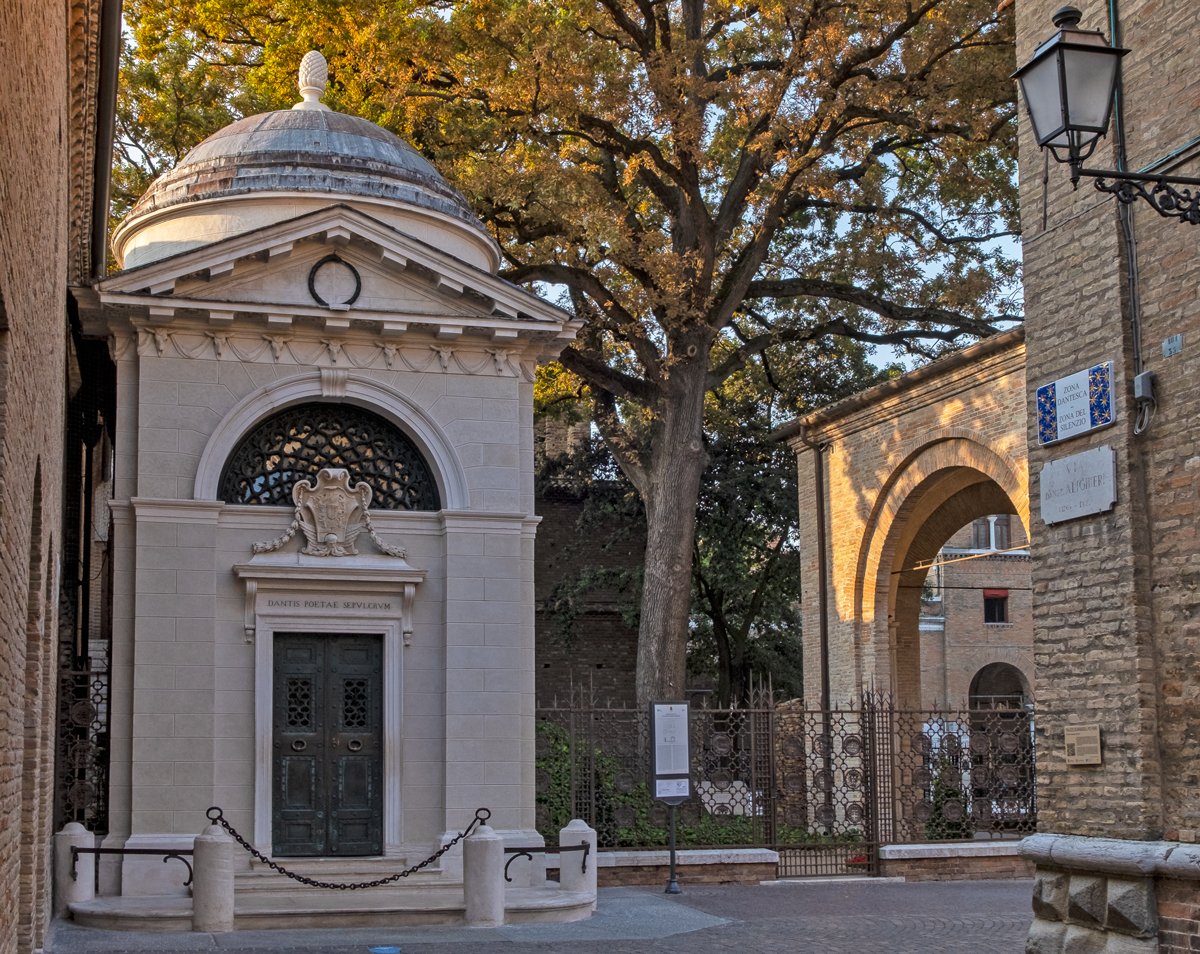
Let’s start this itinerary from the end. Here, we are in front of Dante’s Tomb, a little building created at the end of the 18th century by famous local architect Camillo Morigia, who also created other constructions in Ravenna, like the suggestive façade of the Basilica of Santa Maria in Porto.
It’s a little corner of peace and respect in the medieval heart of the city, shadowed by the big logs of a nearby tree and animated by the whispers of the loads of tourists that every day come here to pay homage to the great Poet.
If you look inside, you will be enraptured by the big Renessaince bass-relief (1483) that depicts Dante absorbed in the reading, made by sculptor Pietro Lombardi (the same who realised the famous Statue of Guidarello, just to be clear) and an 18th-century torch, lit by the Oil of Tuscan Olive trees, given every year, on September, by the Municipality of Florence to homage Dante’s memory.
On one side, a little garden emerges, building a unique complex with Dante’s Tomb. It is known as Quadrarco di Braccioforte and it is an ancient oratory that, at Dante’s times, should have been connected to the nearby Basilica of San Francesco, which has been the focus of a series of stories related to the remains of the Supreme Poet.
Now, it hosts two huge marble sarcophagi of Roman times and a little Belltower that, at sunset, plays thirteen tolls, reminding the famous tercets, a structure-element of Dante’s work.
The Old Franciscan Cloisters
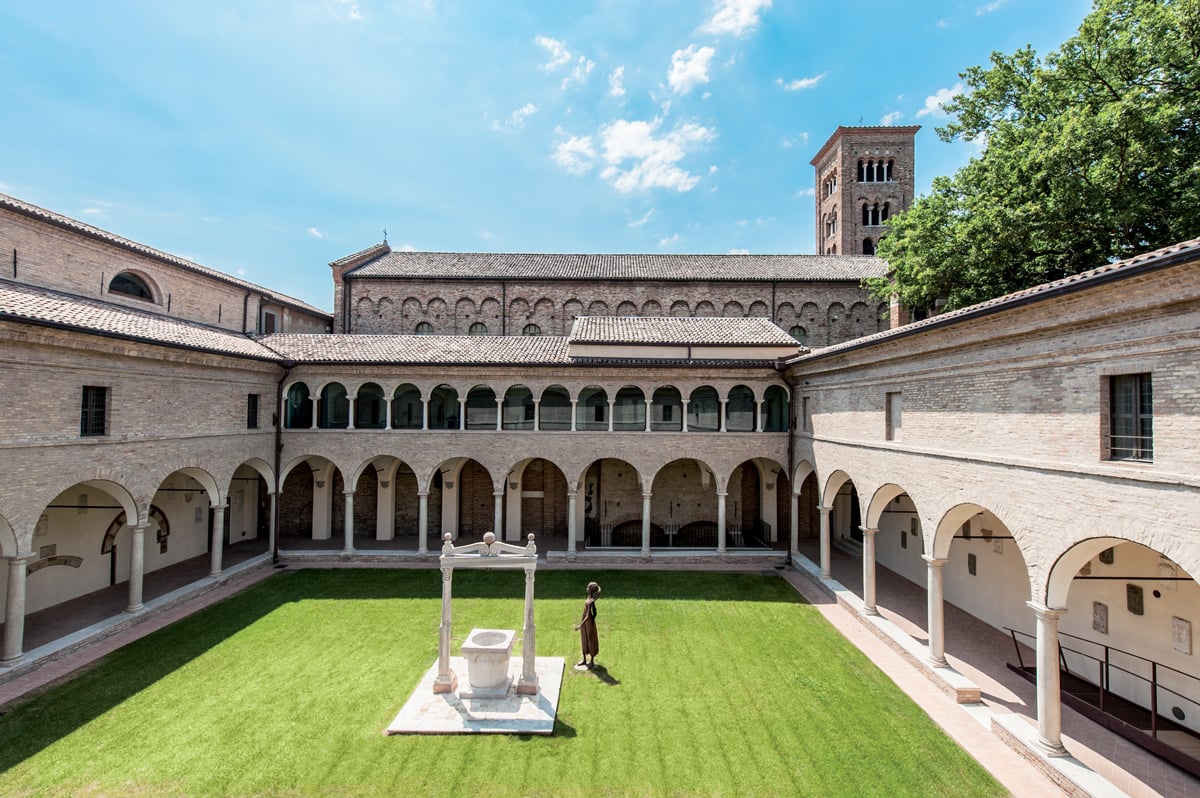
Next to Dante’s tomb, the core of Zona del Silenzio is a place of respect dedicated to the Poet.
In this ancient convent dedicated to S. Francesco. Its building started in 1261 and the alignment of cloisters and porticoes gives to this place a special atmosphere of peace and serenity.
It hosts a number of events and exhibition initiatives all year round.
On the higher floors is sited Centro Studi Dantesco, the centre dedicated to Dante studies, along with some relevant manuscripts and Museo Dante, whose aim is to give value to the role Ravenna played during the years of the poet’s exile.
Basilica of San Francesco
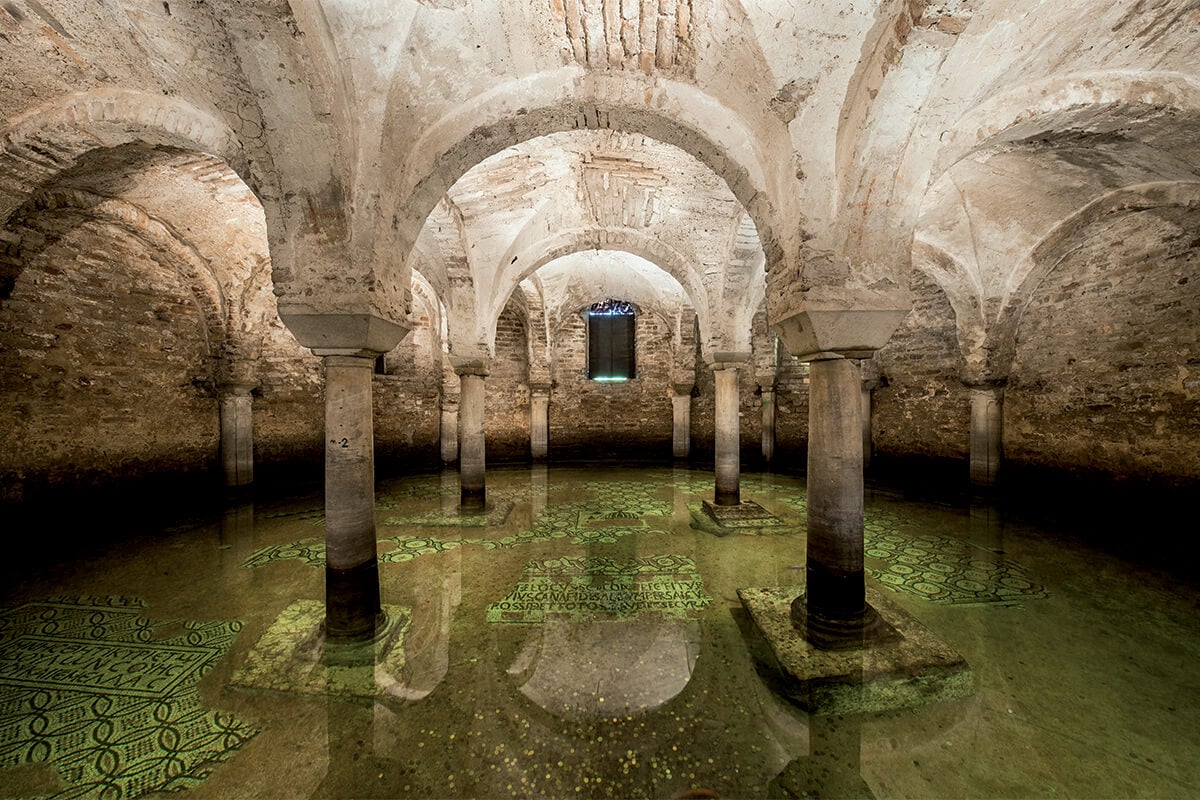
Right in this church dear to the Da Polentas, we should imagine Dante absorbed in meditation.
It is the place where Dante presumably used to pray during his stay in Ravenna, and where his funeral procession took place the day after his death.
The Basilica keeps many elements recalling the 14th century: the Cappella dei Polentani, with refined frescoes of the Riminese-school; the tombstone of Ostasio da Polenta and a little 3m-deep trapdoor in the floor that leads to a lateral door of the Basilica of Dante’s times.
Furthermore, until the Second World War, this building probably safeguarded even a portrait of the Poet by Giotto, that has unfortunately gone destroyed.
As concerns the basilica, the building was erected by Archbishop Neone in the 5th century and it underwent later several reconstruction works that modified its original architecture, bringing about some structural newness like the bell tower built in the 10th century, and, most important, the oratory crypt that keeps under a 1,5mt depth a series of astounding mosaics dating back to late Antiquity.
Casa Scarabigoli
Now, we are in front of Dante’s Tomb, in the heart of Zona del Silenzio (Area of Silence).
Here you will find the old home of the family Scarabigoli (contemporary to the Da Polentas). It had presumably been the house of the Supreme Poet during his stay in Ravenna.
Francesca's House
We can meet her in Via Zagarelli alle Mura, near Porta Sisi.
Here there is an unadorned and fair-faced house that may be dated back to the 13th century. As tradition has it, in fact, it was (maybe) the birthplace of the famous Francesca mentioned in Dante’s work.
Classense Library
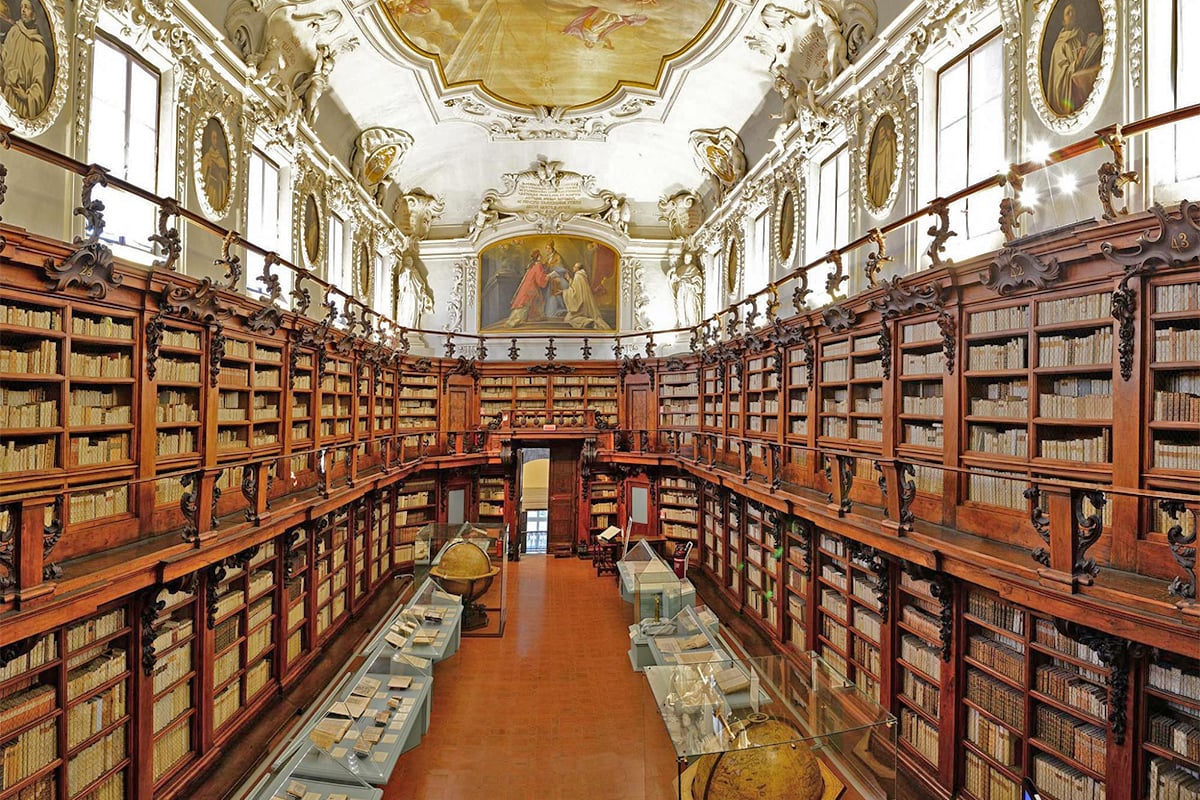
Although it was built two centuries after Dante’s death, the Classense Library is a fundamental stop for a better understanding of the relationship between the Poet and the city.
In the archives of the library, many records about Dante, from relics, like the big funeral monument that is used to exhibit the bones recovered in the occasion of Dante’s 6th centenary of birth (1865), to the most complete collection of first and rare editions dedicated to the work of Dante, curated by publisher Leo S. Olschki.
Every morning, the Aula Magna opens its doors to the public – and the admission is free – you can’t miss it!
The Pine Forest of Classe
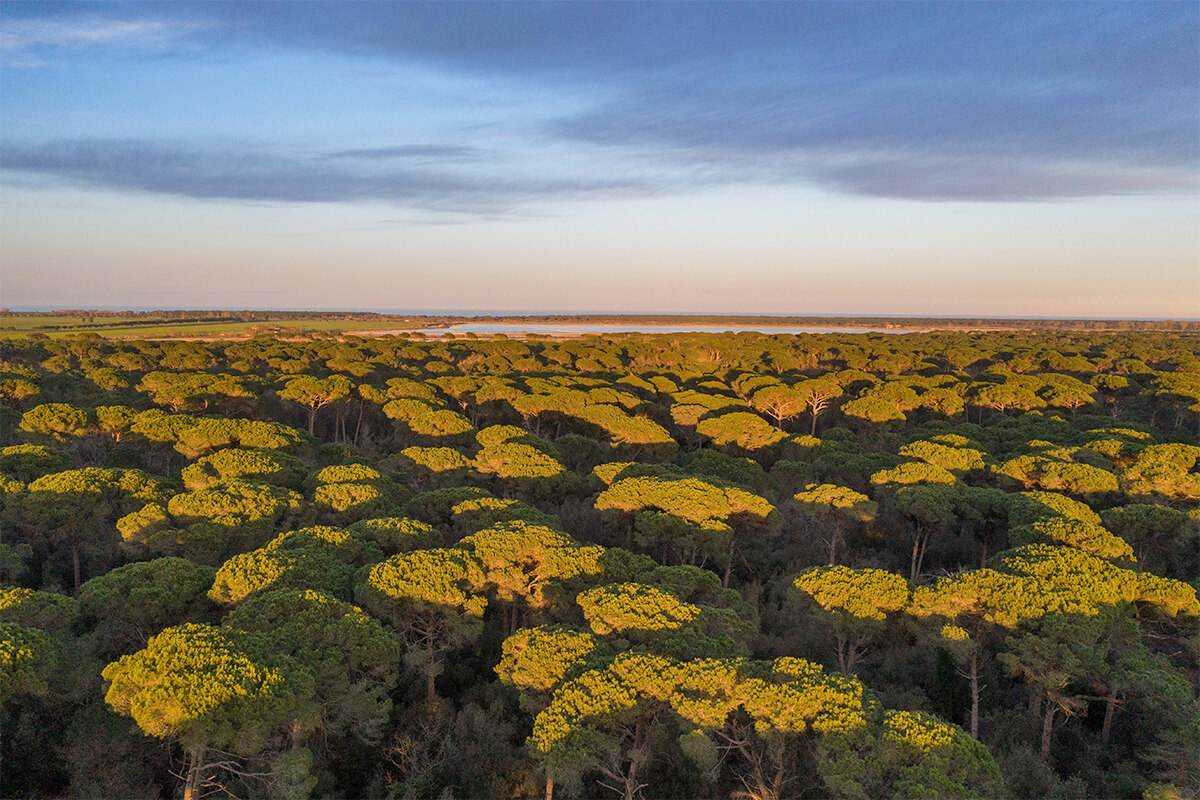
At Dante’s times, it was a vast forest area that from the river Reno arrived up to Cervia, stretching parallel to the Adriatic Coast.
During his stay in Ravenna, he not only crossed the Pine Forest of Classe more than once, but it was so present in Dante’s mind, that he could not fail to mention it in his mystic travel in the Purgatory (“that celestial forest, whose thick shade with lively greenness” – Purg. XXVIII)
Today, the forest is one-third of what it originally was but nonetheless, it has still preserved its wild original 14th-century old charm.
It starts immediately south to the Basilica of Sant’Apollinare in Classe and it is easy to reach through the cycle-pedestrian routes.
Church of Santo Stefano Degli Ulivi
Today it hosts the Municipal Police Station but, during the 12th century, it was the site of the Church of Santo Stefano Degli Ulivi.
The church is said to have welcomed Antonia, Dante’s daughter. She became a Dominican sister bearing the name of Suor Beatrice.
Via Zanzanigola
According to some documents discovered in the State Archives of Ravenna, Pietro – Dante’s son – lived in the area of Via Salara.
Even after Dante’s death, the Da Polentas helped him and his family with incomes and concessions.
The frescoes of Santa Chiara
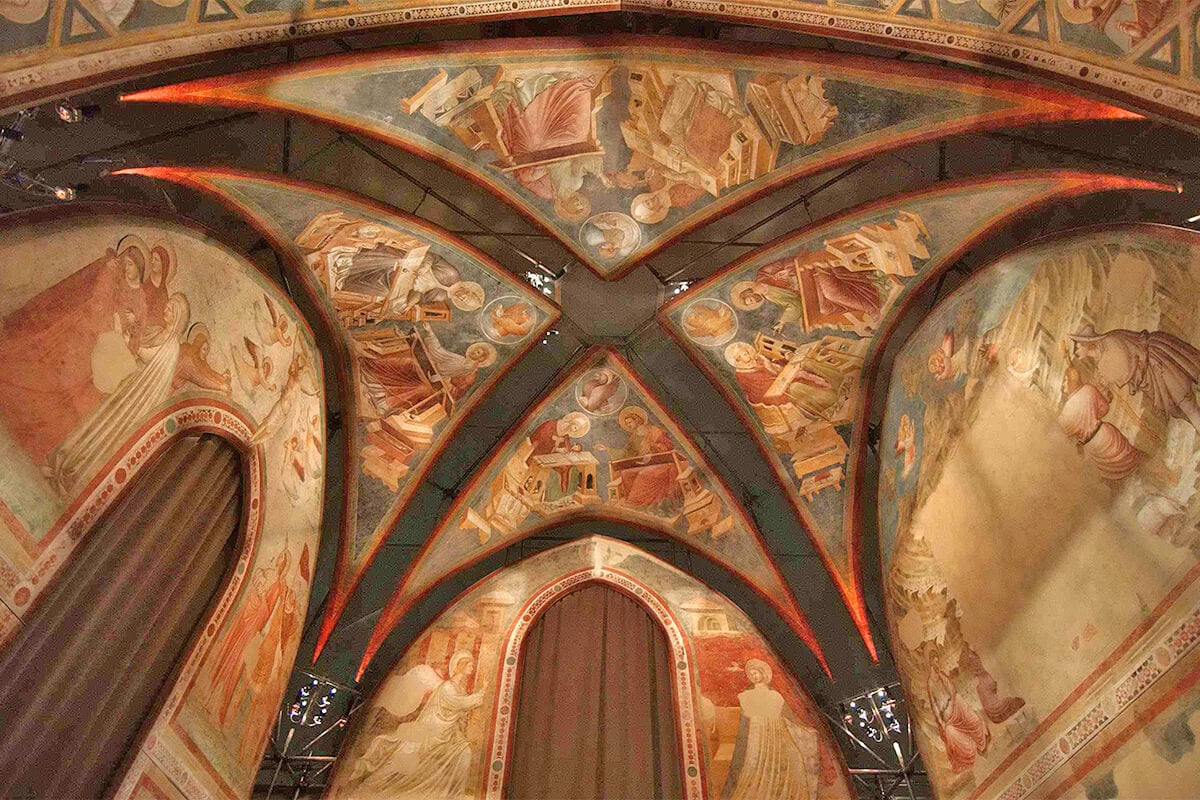
This cycle of frescoes belonging to the Giotto-riminese school is now preserved at the National Museum of Ravenna. Even though they don’t seem directly linked to Dante, they have many elements in common.
First of all, the period they belong: they date back to the beginning of the 14th century. They were presumably realised in 1311, on the occasion of the consecration of the church’s altar.
Second point – the place: these amazing frescoes embellished the apsis of the church of Santa Chiara (today site of the Luigi Rasi Theatre), which Dante must have known very well, since it was erected in 1255 by Chiara da Polenta, the daughter of Guido, who was almost of the same age as Dante’s daughter, Antonia.
The Byzantine mosaics
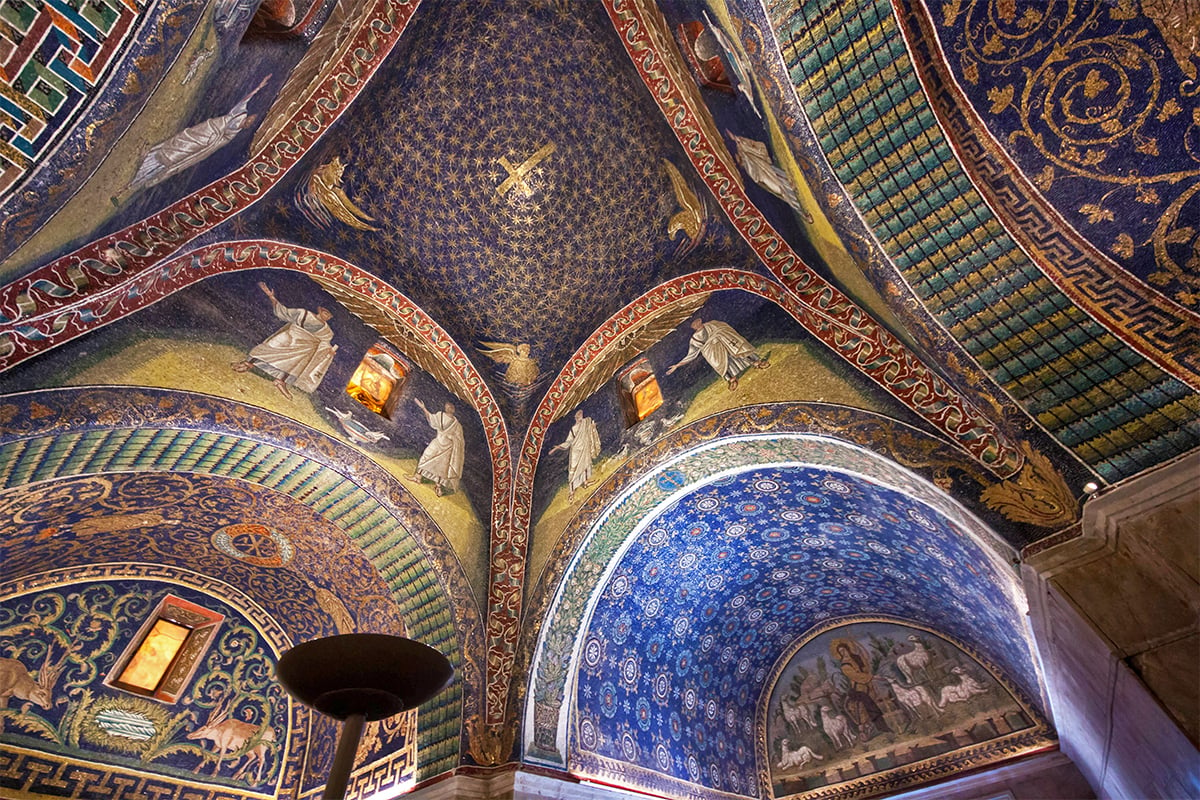
Even if mosaics have not been directly mentioned in the Comedy, Dante must have been blinded by the light of the mosaics inside the Byzantine Basilicas.
Laura Pasquini, a famous iconographer, has discovered many parallelisms in Purgatorio and Paradiso that recall the magnificence of Ravenna’s mosaics.
Author

Davide Marino
Davide Marino was born archaeologist but ended up doing other things. Rational – but not methodic, slow – but passionate. A young enthusiast with grey hair
You may also like

Interested in our newsletter?
Every first of the month, an email (in Italian) with selected contents and upcoming events.
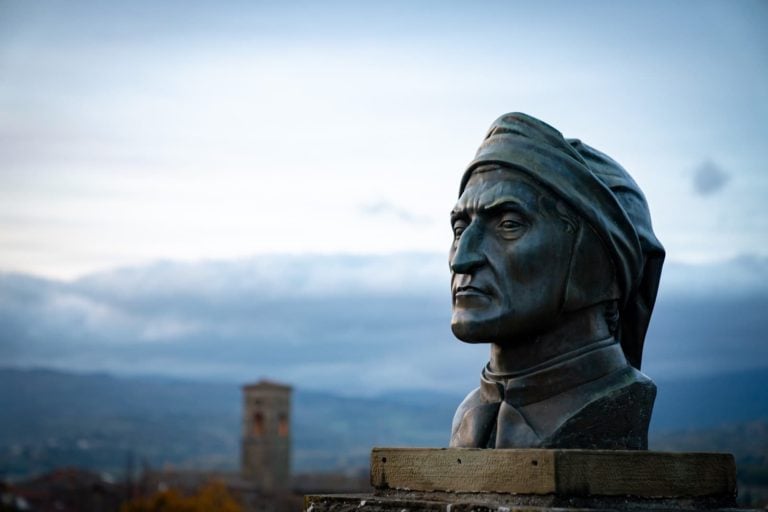
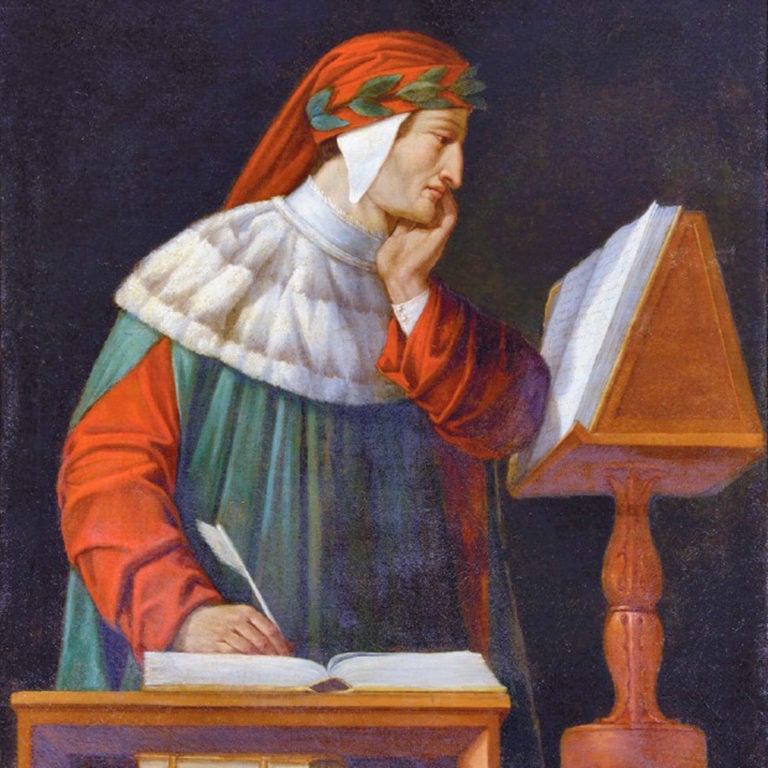
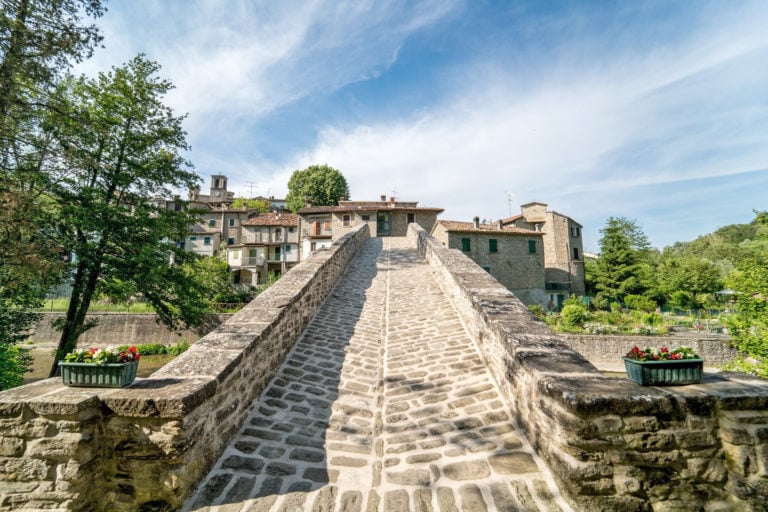
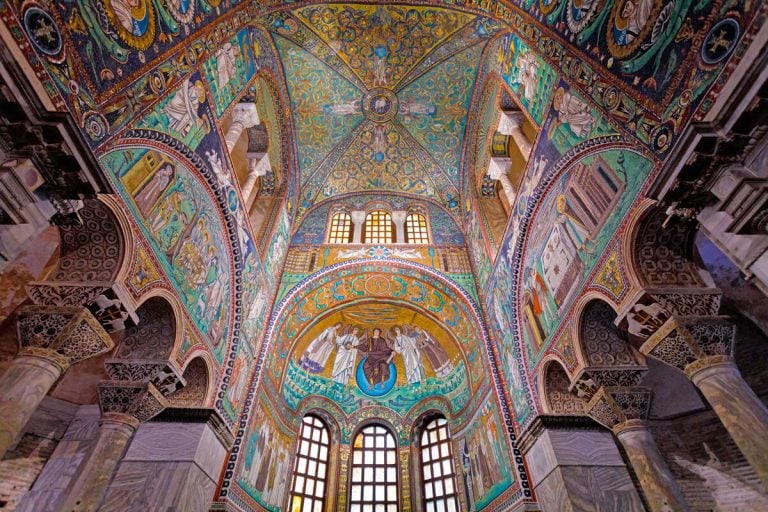
Joni Ravenna
Hello Davide,
I just finished your article and enjoyed it very much. My maiden name is Ravenna and I’m a playwright.
I’m actually currently doing some research work for a new play which will involve Dante and Ravenna.
Thank you again for this wonderful article. Your English is much better than my Italian 🙂
Davide Marino
Hi Joni,
thank you so much for your feedback. You were very kind!
I knew that Ravenna was a person’s name, I did not even think a maiden name. How cool is that!
In occasion of the 750th anniversary of Dante’s death, Ravenna is organizing lots of initiatives, including theatrical performance like this one: http://www.ravennafestival.org/en/events/inferno/
Best regards
Davide